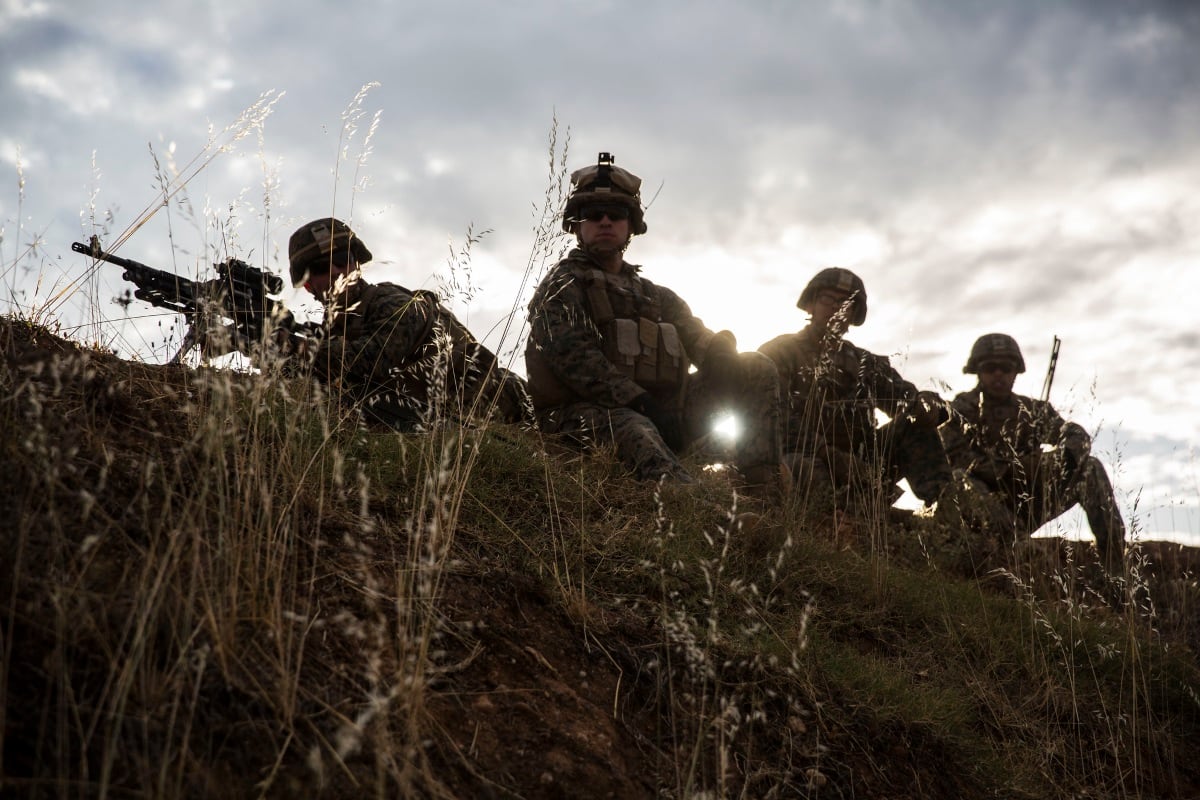They’re not much bigger than the latest Samsung Galaxy smartphone, but these tactical tablets won’t be hailing Uber rides — instead they will help Marines rain down precision strikes, direct machine-gun fire and plot friendly positions.
The device is known as the Marine Air-Ground Task Force Common Handheld, and the Corps started fielding an early release version of the device to squad-level dismounted Marines earlier this year, according to Maj. Ken Kunze, a Marine spokesman. The devices will be fielded to “dismounted maneuver leaders,” he said.
The tablets will provide increased battlefield situational awareness by feeding friendly location information and allowing secure communications through texting. In August 2018 Marines training in Norway used the tablets to direct machine-gun fire.
The device can also be used to send spot reports of suspicious enemy activity or help direct precision fires.
The new tablets will provide fighters with a "secure handheld device that leverages commercially available platforms to provide digital command and control capability to squad-level dismounted forces at the tactical edge,” Kunze said.
But with any new technology comes risks of exploitation by tech-capable enemy forces, especially electronic devices that can communicate and track location data.
The Wall Street Journal reported in 2017 that Russian forces were targeting and hacking smartphones of NATO troops in Poland and the Baltic states.
To mitigate that risk with the new tactical tablet, the Corps worked with National Security Agency’s Commercial Solutions for Classified program, which helps the military to reprogram commercial devices to operate in classified environments.
“Up until this point, handheld commercial devices used for tactical purposes had to be reprogrammed with military-owned security not found in the original device,” then-Maj. Kevin Shepherd, a Marine Corps Systems Command program lead, said in a command release. “Working with CSfC, we are using their approved list of devices. These devices will all have multiple layers of encryption, both on the phone and in transmission. If obtained by the wrong person, our devices should withstand any hacks long after the tactical information loses value.”
The tactical tablets are part of the Corps’ push to deliver battlefield information and situational awareness down to the lowest tactical level possible, which will aid infantry squads in being less dependent on large-scale command outposts for data dumps and intelligence feeds.
“On the maneuver side, the enabling capabilities like some of the [command and control] systems out there that allow you to push information in really detailed formats to the end user … All of a sudden that guy has got the same situational awareness that the three-star general has at the [Marine Expeditionary Force] headquarters,” Maj. Gen. Mark Wise, deputy commander of Marine Corps Combat Capability Development Command, told reporters during a media roundtable Aug. 1.
RELATED

“You’re able to make decisions much, much faster because everyone has a fairly good picture of what’s going on," Wise said.
Wise’s comments about the data revolution aiding grunts on the battlefield were made at a media roundtable discussing July’s Advanced Naval Technology Exercise that took place at Camp Lejeune, North Carolina. A number of emerging technologies that will aid naval integration and the future battlefield were evaluated throughout the exercise.
Other versions and upgrades of the new tactical tablet are also coming down the pipe. The Marine Corps expects to complete its fielding of the early release variant by September, and additional systems and upgrades will start being dished out sometime in November, Kunze explained.
The Corps recently awarded a contract valued at $48 million to iGov Technologies “to design, develop and produce secure wireless handheld systems for the MAGTF Common Handheld,” a company press release said.
Shawn Snow is the senior reporter for Marine Corps Times and a Marine Corps veteran.





